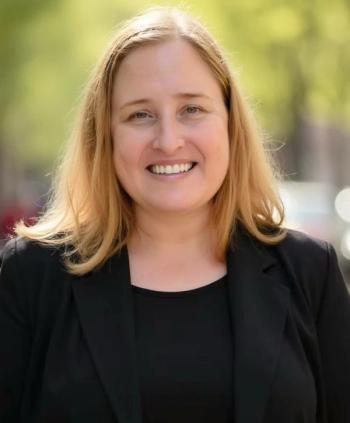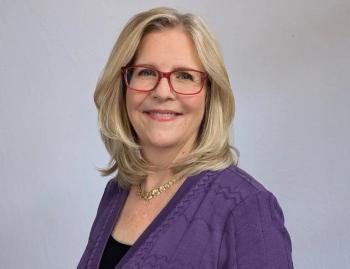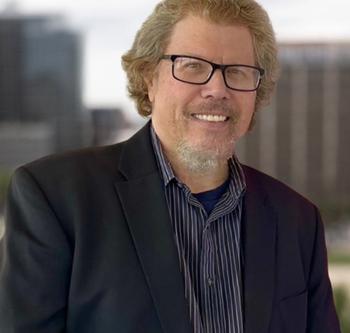
In Conversation With a Sigourney Award Winner: The Intersection Between Psychoanalytic Thought and Social Anthropology
Rosine Perelberg, PhD, discusses psychoanalytic thought, social anthropology, and the future of psychoanalysis.
CLINICAL CONVERSATIONS
Psychiatric Times® spoke with
Psychiatric Times: Your work emphasizes the intersection between psychoanalytic thought and social anthropology, offering innovative interpretations of temporality, sexuality, and antisemitism. How do you believe this interdisciplinary approach enriches our understanding of psychiatric phenomena and clinical practice?
Rosine Perelberg: My background in social anthropology has taught me 2 main things. Any phenomenon is inserted into a context that is the anthropological endeavor to understand. There is also the notion of structure, which challenges any form of linear thinking. I believe these ideas are central to psychoanalytic and psychiatric practices.
I can elaborate further by giving a bit of background. While still at university, I was part of 2 study groups. In 1, we studied work by the French anthropologist Claude Lévi-Strauss on the myths of Latin America. In the other, we read Sigmund Freud chronologically, for a period of 5 years.
Lévi-Strauss traveled throughout Latin America, collecting the various myths held by different populations. He concluded that there are a limited number of symbols present in these myths, which are transformations of each other. This would later echo for me with Freud's ideas that there are only a limited number of things that are symbolized—for example, birth, death, siblings, and the primal scene (the phantasy of what happens between the parents at night). These key life events are at the core of anxieties brought to the clinic by our patients.
Levi-Strauss also indicated another characteristic of myths, which is what gives them an operational value: They are timeless. They explain the present and the past, as well as the future. These ideas are critically present also in psychoanalysis. Any symptomatic manifestation is inserted into a context and may also be understood as being at the crossroads between past and present, between different moments in time.
When Freud studied hysterical patients, he suggested that they suffer from “reminiscences” in that their symptoms express something traumatic in the past that they are reliving in the present. Psychoanalysis endeavors to discover these connections in order to try to alleviate the patients’ symptoms and suffering.
Freud regarded the repetition compulsion as an ungovernable principle existing in the unconscious. It represents the repetition of old experiences that the individual has no conscious recollection of. The repetition compulsion, which is at the basis of symptom formation, can also be seen as an attempt to grasp that which has not been properly understood by the individual about himself or herself. This quest for knowledge is, in the final analysis, a search for knowledge about one's origins.
This is a theme that concerned Freud throughout his work as he emphasized mankind's concern with its origins and interpreted the Riddle of the Sphinx as being where babies come from. This interpretation has been extended by several analysts, such as Mark Kanzer and Geza Roheim, who suggested that the sphinx refers to parental intercourse.
Many years later, in 1963, Lévi-Strauss, in turn, interpreted the myth of Oedipus as containing a fundamental question for human beings about their origins. The myth, according to Lévi-Strauss, attempts to mediate a conflict between a theory that attributes to the individual an autochthonous origin, and the knowledge that any individual is, in fact, born of the union between a man and a woman. The myth is an attempt to understand and elaborate the question of how 1 can be born from 2. This question implies the renunciation of the possession of the other—of one's mother, daughter, or sister—thus facilitating the foundation of culture and exogamy.
This is a small illustration of the way my thinking moves back-and-forth between psychoanalysis and anthropology, the one informing the other.
PT: In your writings, you have explored the intricate dynamics of paternal and maternal functions, both in clinical settings and societal contexts. How can mental health clinicians integrate your insights into their therapeutic approaches, particularly when working with patients navigating issues related to family dynamics and identity?
Perelberg: One could make links between this question and my previous answer. Any individual is inserted into a complex set of familial relationships—individuals with whom he or she forms identifications.
Identification is a key word in psychoanalytic formulations and central to the understanding of the individual’s internal and external relationships with people. One can explore the individual’s identifications with mother, father, teachers, uncles, aunts, etc, building a constellation of identifications that forms an individual’s identity. In psychoanalysis, this identity is, however, always unstable because of the different identifications that each of us carries inside us.
From a very early stage, psychoanalysis has maintained that the psychic reality of sex had to be distinguished from the anatomical reality. In his
Initially, however, Freud assumed symmetry in the development of what he called the Oedipus complex. Boys love their mothers and feel rivalry and murderousness toward their fathers; girls desire their fathers and are jealous of their mothers. At that point, Freud was still, in the words of Jean Laplanche, a “vulgar empiricist.”
In an essay written in 1925, “
During this initial stage, bisexuality is characteristic of both sexes. What is it, then, that is repressed? In the main body of his work, Freud oscillated between 2 hypotheses. According to the first, the nucleus of the Unconscious, of what is repressed, is the side that belongs to the opposite sex. According to the second hypothesis, both sexes “repudiate femininity,” a phenomenon that is an essential element of the asymmetry between the sexes.
This repudiation is, Freud suggests, in
In individual consultations, it is important to understand these different identifications, which sometimes may conflict with each other. At times, the conflict can be too difficult to navigate, and a symptom appears as a possible “solution.”
An example comes to mind: a severely anorexic girl, aged 13 years, whom I saw many years ago. The mother and father had different projects for her life, and she felt literally “stretched” between these different expectations toward her. In a way, one can say that she interrupted her development as a woman, as she could not chose what she wanted for herself in the middle of this conflict between the parents, as she experienced it inside her.
Another young man I saw, who was full of doubt about his sexuality, expressed over the course of his work with me how confused he felt about the nature of his parents’ sexuality. Again, the parents were always fighting; the father was violent toward his mother, and my patient felt that he needed to be there to protect her.
Similarly to the girl above, this patient felt that he needed to stay at home and protect his mother from his violent father, but he did not feel that he could do this as a potent man, as he risked being violent toward his father. So, he emasculated himself in order to be able to stay at home, felt stuck with his mother, and was unable to find a sexual partner for himself.
PT: Your research delves into the psychoanalytic understanding of traumatic historical events, such as the Holocaust. How can psychiatrists apply these insights when working with patients who have experienced collective traumas or inherited familial trauma, and what implications does this have for the broader field of psychiatry?
Perelberg: It took many years before the narratives of what had taken place during the Shoah (Holocaust) began to surface and be published, as survivors slowly started to be able to speak about it. The Eichmann Trial in Jerusalem, 16 years after the end of the war, was a marker in that, for the first time, one heard the narrative of survivors in a court of justice. These accounts were harrowing and distressing, but the victims were given a voice to offer their own narrative of the horrors they had lived through.
For the perpetrators, the silence surrounding the Shoah may have been a way of denying and disavowing what had taken place. Among the victims, one is aware of those who were able to write about their experiences in the camps and who then later killed themselves: Jean Amery, Bruno Bettelheim, Paul Celan, Jerzy Kosinski, Primo Levi, Arthur Koestler, Piotr Rawicz, Peter Szondi, Joseph Wulf.
One of the lessons one learned is that it may take many years before someone is able to talk about their traumatic experiences. They may feel guilty about surviving, ashamed of having survived, or simply be living in a state of denial, as a defense that enables them to continue living without being in contact with the horrors that happened to them. This is an important lesson because in a situation of treatment, one must wait for individuals to find their own pace, rhythm, and timing before they are able to talk about their traumatic experiences. One cannot demolish their defenses.
The analysts and psychiatrists who worked with survivors of the Holocaust also learned progressively about unconscious transmission and how the traumatic past can be transmitted unconsciously to the second generation of survivors.
PT: As president of the British Psychoanalytical Society during the pandemic, you played a pivotal role in guiding protocols for virtual teaching and practice of psychoanalytic work. How do you envision the future of psychoanalysis considering these technological advancements, and what challenges and opportunities do they present for psychiatrists engaging in clinical practice and research?
Perelberg: The pandemic constituted a traumatic period for all of us. I have in mind those who did not survive, but also those who lost the final years of their lives in confinement, such as the elderly and the sick.
I remember the exact moment when, as president of the British Psychoanalytical Society, I decided that it was not possible to continue to meet patients face-to-face. I had been in contact with the presidents of psychoanalytical societies in Italy, France, and Spain, who spoke of the horrors of what was happening in their countries. In Britain, we were exposed on our TVs to films of intensive care units filled with patients having difficulty breathing and being put on respirators.
On my way to the society, I spoke to our CEO and dictated a letter, which I then asked the executive to sign. We were suspending all face-to-face meetings. At the end of that same week, we closed our clinic. Overnight, we turned to Zoom and to the telephone. We were extremely lucky to have an excellent audio-visual team, as we had already begun a few years earlier to have an infrastructure that enabled colleagues in the regions to attend our seminars and meetings by Zoom.
This technological structure now had to be used for a situation that one had never imagined before. In May 2020, we had our first scientific meeting by Zoom. It was attended by some 270 individuals—unheard of for a scientific meeting. We had entered a new phase.
After the pandemic, the return to work in-person with our patients in our consulting rooms took a while. The circumstances varied for each analyst, depending on their own level of vulnerability or that of their patients. It was very moving to be able to return to in-person work in our consulting rooms. One cannot underestimate the sense of emotion of having survived.
Our scientific meetings, however, never returned to being what they had been earlier, as most individuals now prefer to attend those by Zoom. I have just come back from a European Psychoanalytic Federation Conference in Florence, which was attended in-person by 1200 colleagues. This was very emotional, as so many had not been to such a large event before—it was the largest for a European psychoanalytic congress.
Zoom and the telephone are here to stay. A huge discussion is now taking place in the context of psychoanalytical societies about what is acceptable. In the training of analysts, the trainees need to have their own analysis. I believe that it would be a mistake to have all this training online, as nothing compares with the experience of being in a small room with another person over the years—to have that experience of intimacy where communication takes place on many layers via the use of words, silences, and bodily movements. Several of these dimensions are lost online. I think, however, that a proportion of sessions by Zoom is acceptable.
Seminars and conferences entirely by Zoom are now a fact, and this enables more consistent contact with colleagues from different countries. Ideally, one would search for a balance between contact in-person and the immense possibilities that Zoom offers for contact at a distance with colleagues one would see more rarely. Nevertheless, one would think it would be highly desirable that a considerable proportion of one’s clinical and scientific life should take place in-person.
Dr Perelberg is a training and supervisor analyst, a distinguished fellow, and a past president of the British Psychoanalytical Society. She is a member of the International Psychoanalytic Association, a corresponding member of the Société Psychanalytique de Paris, and one of the founding members of the Institute of Family Therapy, London. She is a visiting professor in the Psychoanalysis Unit, Research Department of Clinical, Educational and Health Psychology within the Division of Psychology and Language Sciences (PALS) at University College, London. In 2023, she was recipient of the Sigourney Award For Work Establishing a Creative Dialogue Between Psychoanalysis And Social Anthropology To Address Temporality, Sexuality, and Antisemitism.
Newsletter
Receive trusted psychiatric news, expert analysis, and clinical insights — subscribe today to support your practice and your patients.














